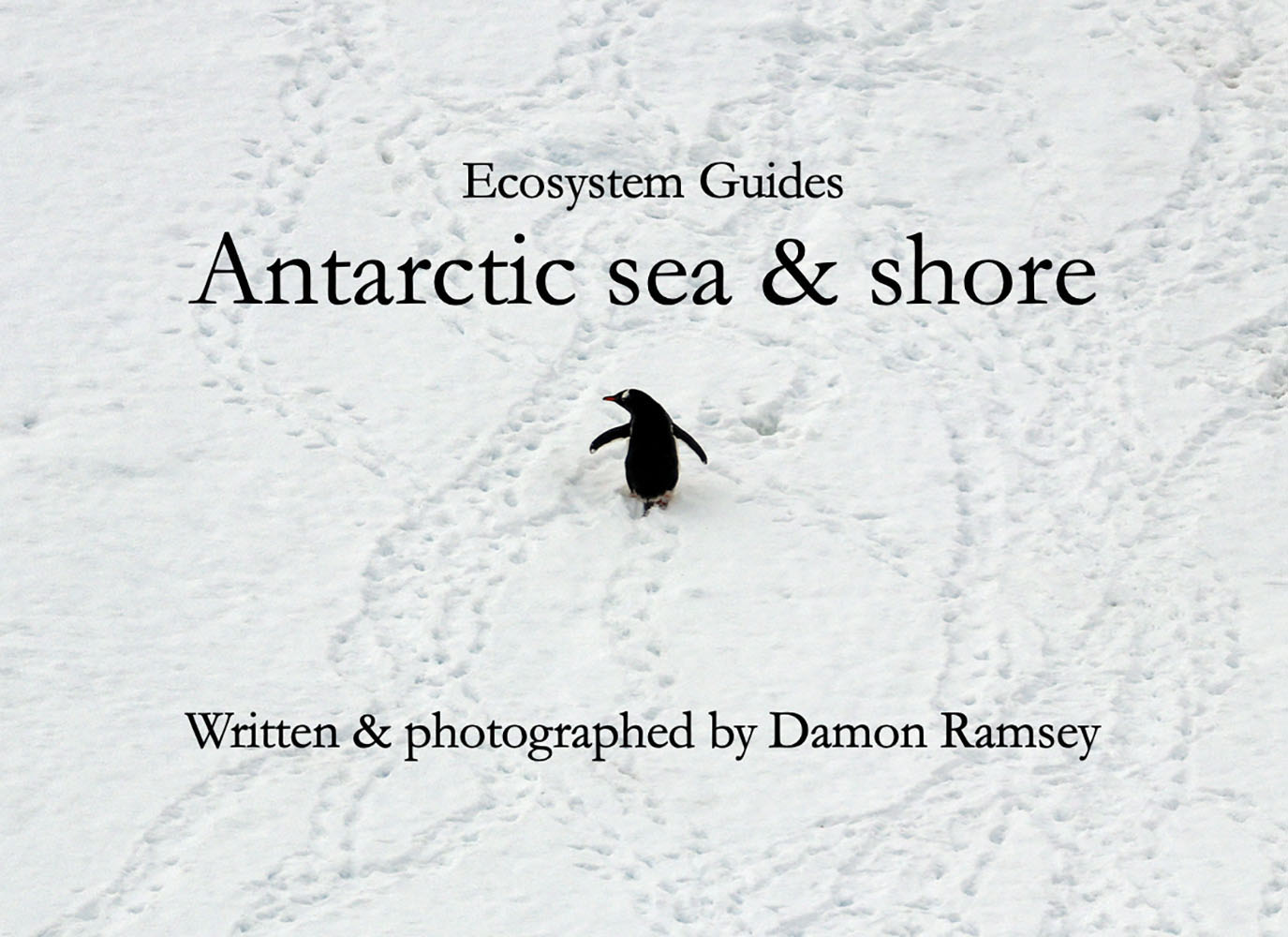ecosystem-guides.com
....exploring the planet's ecosystems
AUSTRALASIAN
Temperate Heathland
(Kwongan & Wallum)
Heathlands are plant communities where the vegetation is dominated by a shrub-high canopy. Their stunted nature can be due to various environmental conditions including nutrient poor sandy soil, lack of rainfall, or exposure. In Australia they are found in the south-east and south-west, and are the ecological and latitudinal equivalents of the southern African Fynbos. In the south east they grow on sandy exposed areas along the coast and on top of plateaus inland. Along the sandy coast of south-east Queensland and north-east NSW, they are known as Wallum. They share species with the adjacent south-eastern temperate woodlands and forest, and become the understory of these habitats. In the south-west of Australia heathlands are widespread, being found across much of the seasonally arid, sandy soil areas along the coast and inland. Here they are known as Kwongan, particularly north of Perth. They can merge in with the adjacent south-western temperate woodlands and forest, and become the understory of these habitats. The heathlands of south west Australia are some of the most botanically rich temperate areas in the world.
(Note that this section focuses on the temperate heathland; in tropical Australia, there are heath communities on sand dunes along the Cape York coast, and heathlands on exposed rocky plateaus throughout northern Australia, but I have included those species under the Australian northern woodlands section).
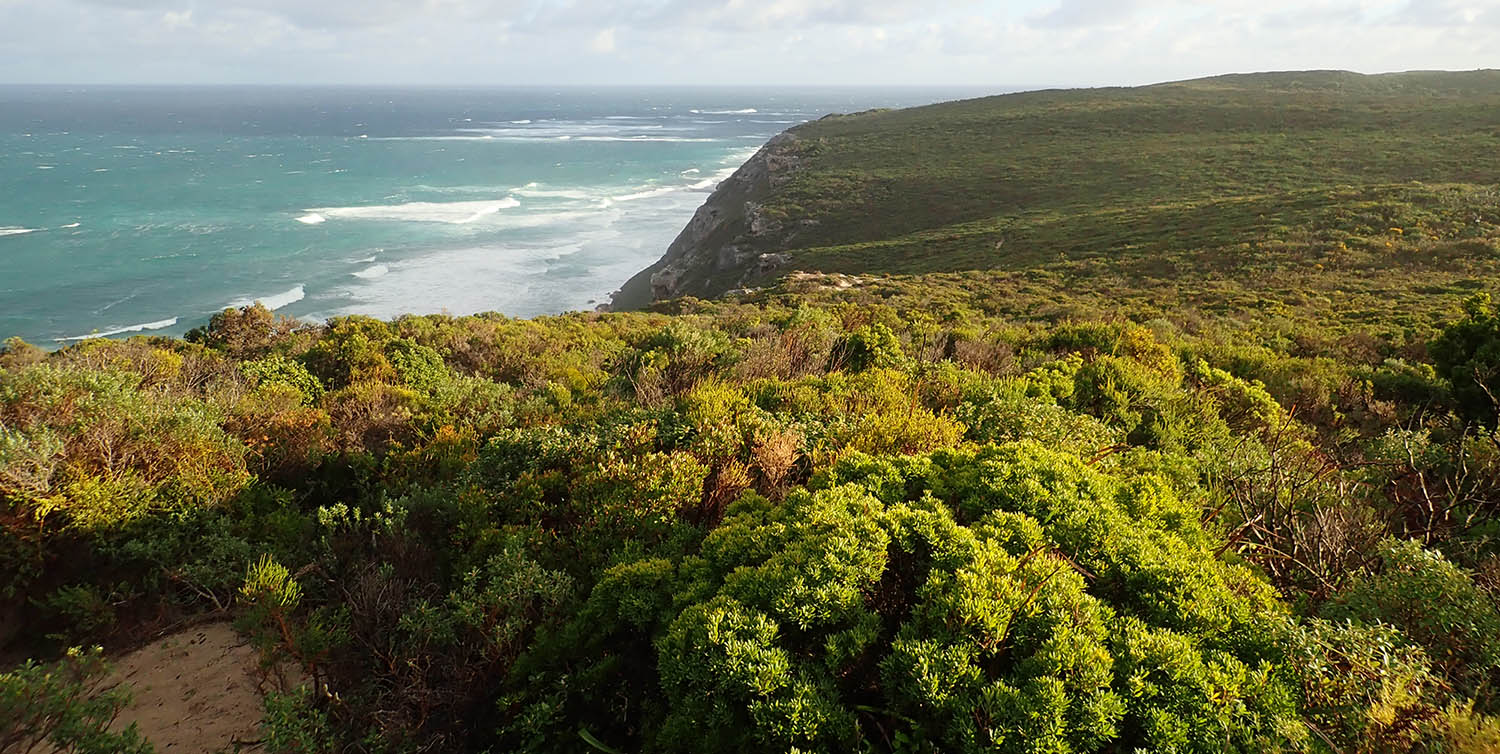
There is an extraordinary diversity of plants on the heathlands of the south west, and this is reflected in a beautiful and inspiring range of flowers. The numerous flowers attract insects, honeyeaters and specialised nectar-feeding mammals, such as Honey Possum.
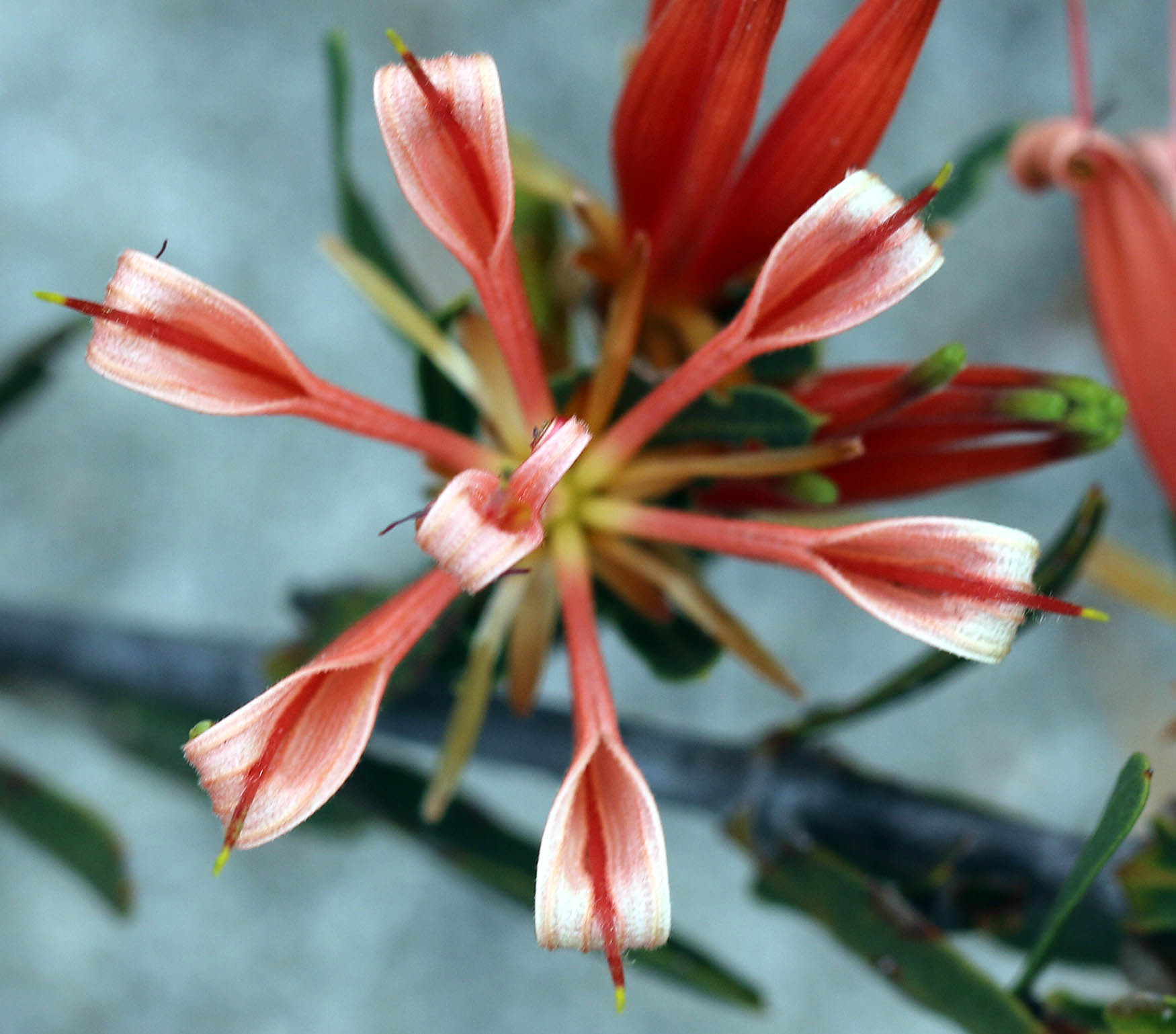
The family Dasypogonaceae includes flowers such as Calectasia spp. 'Tinsel Lilies' that are mostly endemic to the south west, but it also contains the 'Drumsticks' of the Kingia genus. There is only species in this genus. They look like Xanthorrhoea 'Grass Trees', and in south-western Australia, they often grow close to each other. For many years it was thought that they were the female form of Grass Trees. However, they are not closely related.
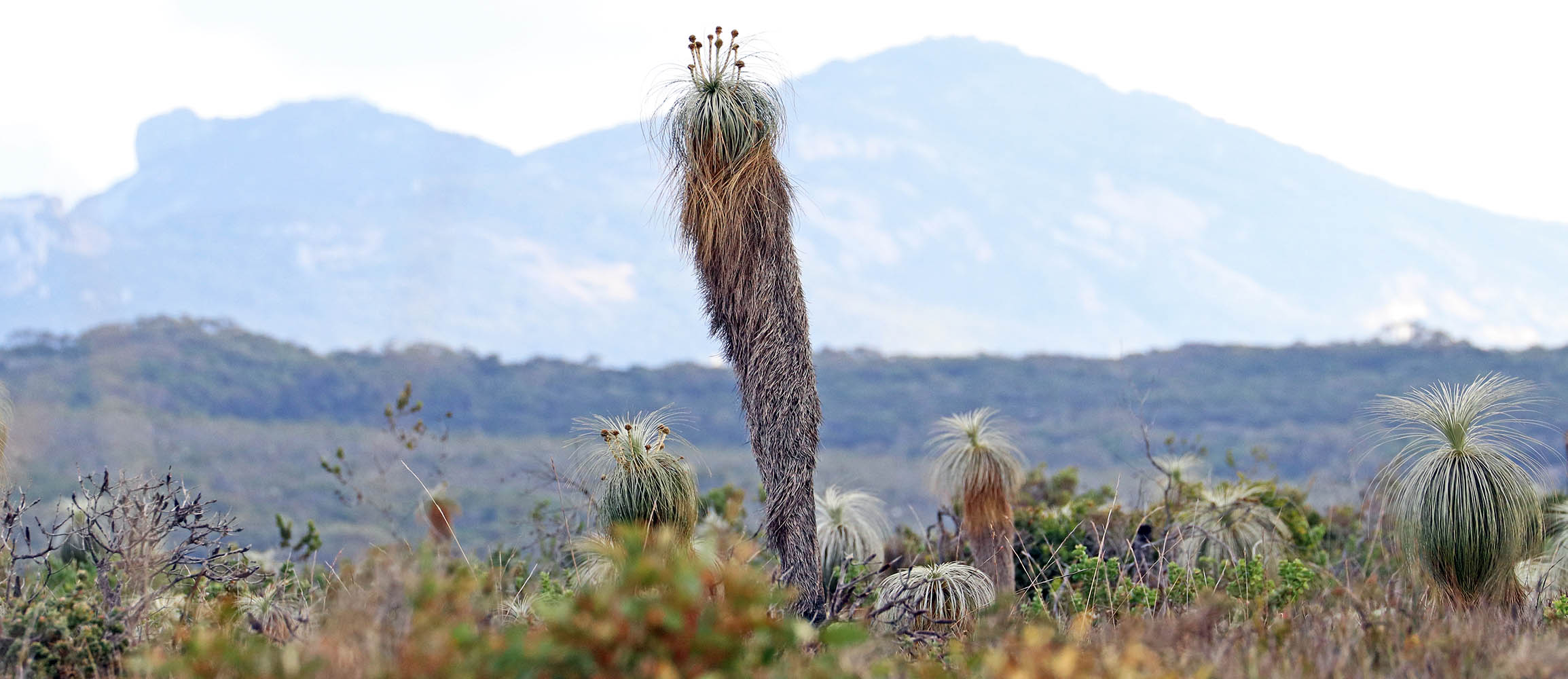
The family Orchidaceae is the biggest family of plants in the world, and is well represented in the south west of Australia. The most obvious genus here is Caladenia. They are mostly terrestrial. There are three main groups: the 'Spider Orchids', the 'Zebra Orchids', and the 'Cowslip Orchids'.
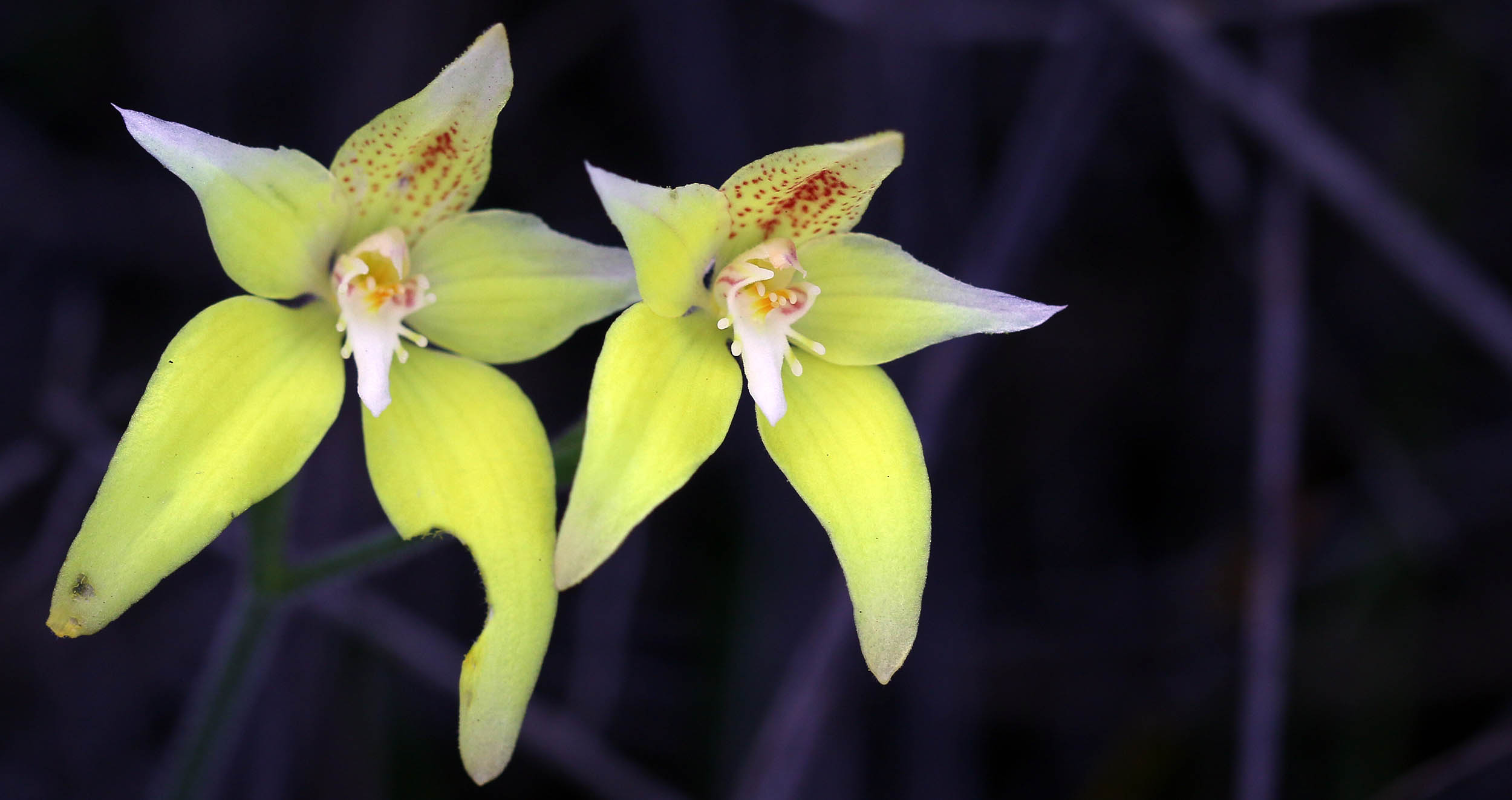 Caladenia sp. 'Cowslip Orchid', (Lesueur National Park, W.A).
Caladenia sp. 'Cowslip Orchid', (Lesueur National Park, W.A).The family Haemodoraceae includes the famous and well-loved 'Kangaroo Paws' of the genera Anigozanthos and Macropidia, mostly endemic to the heathlands of south-western Australia.
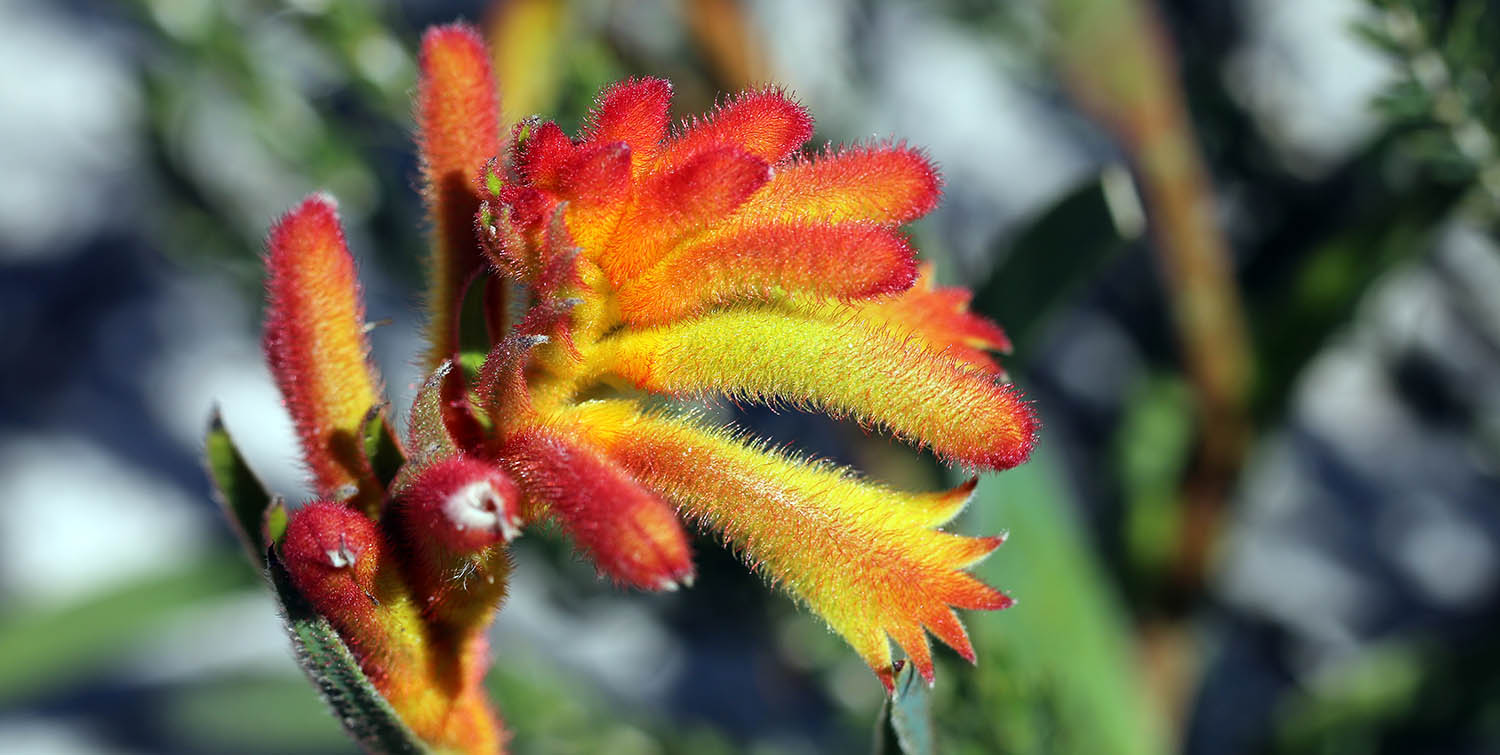 Anigozanthos humilis, 'Common Catspaw', (Lesueur National Park, W.A).
Anigozanthos humilis, 'Common Catspaw', (Lesueur National Park, W.A).The family Proteaceae is one of the dominant ones in the heathlands of the south west. Most flowers that regular people are familiar with have their colour provided by the non-sexual parts, such as the petals. However, like other Proteaceae, the structure and colours of Grevillea flowers are dominated by the female parts.
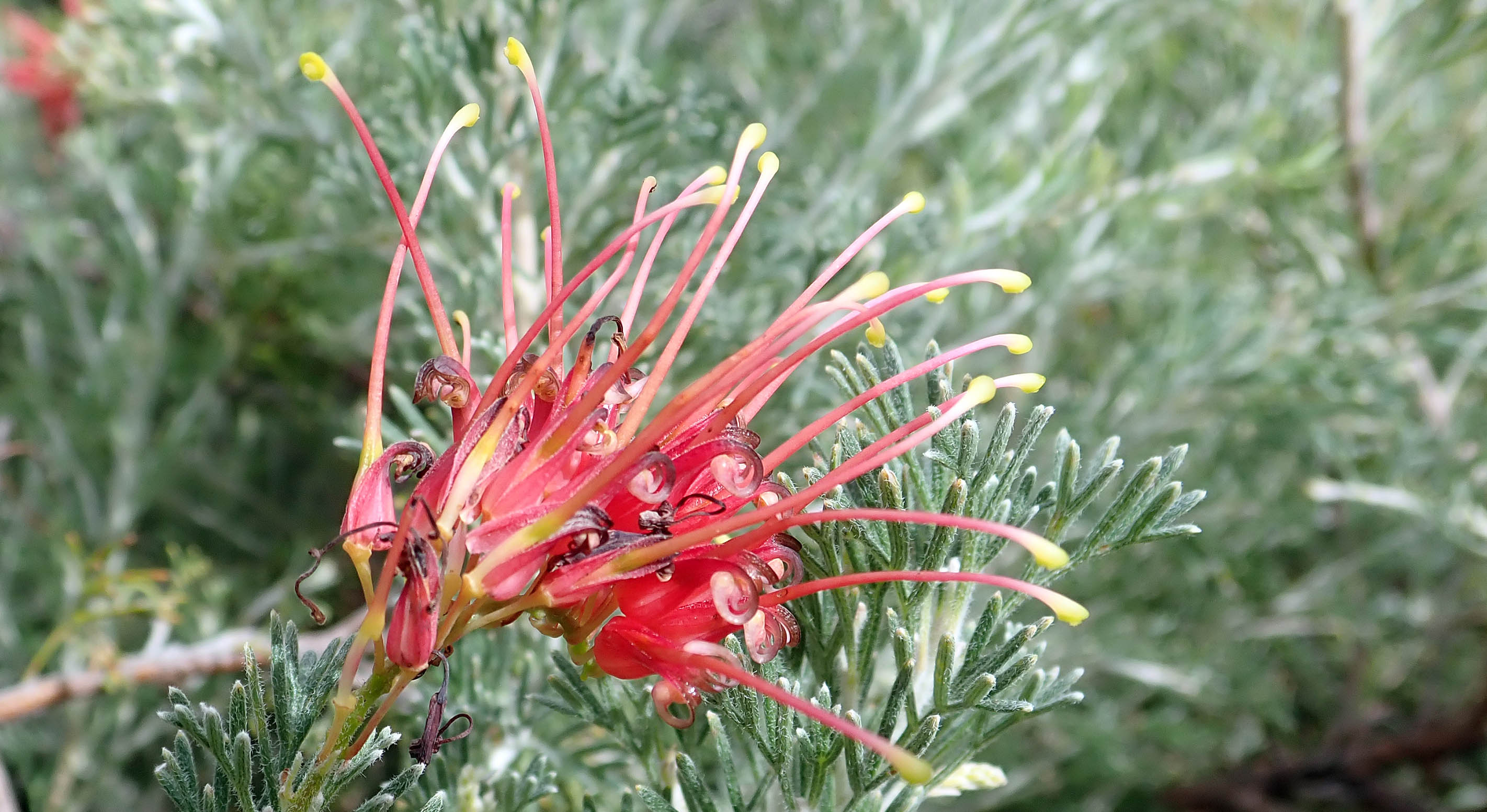
One of the most famous and spectacular genera is Banksia.
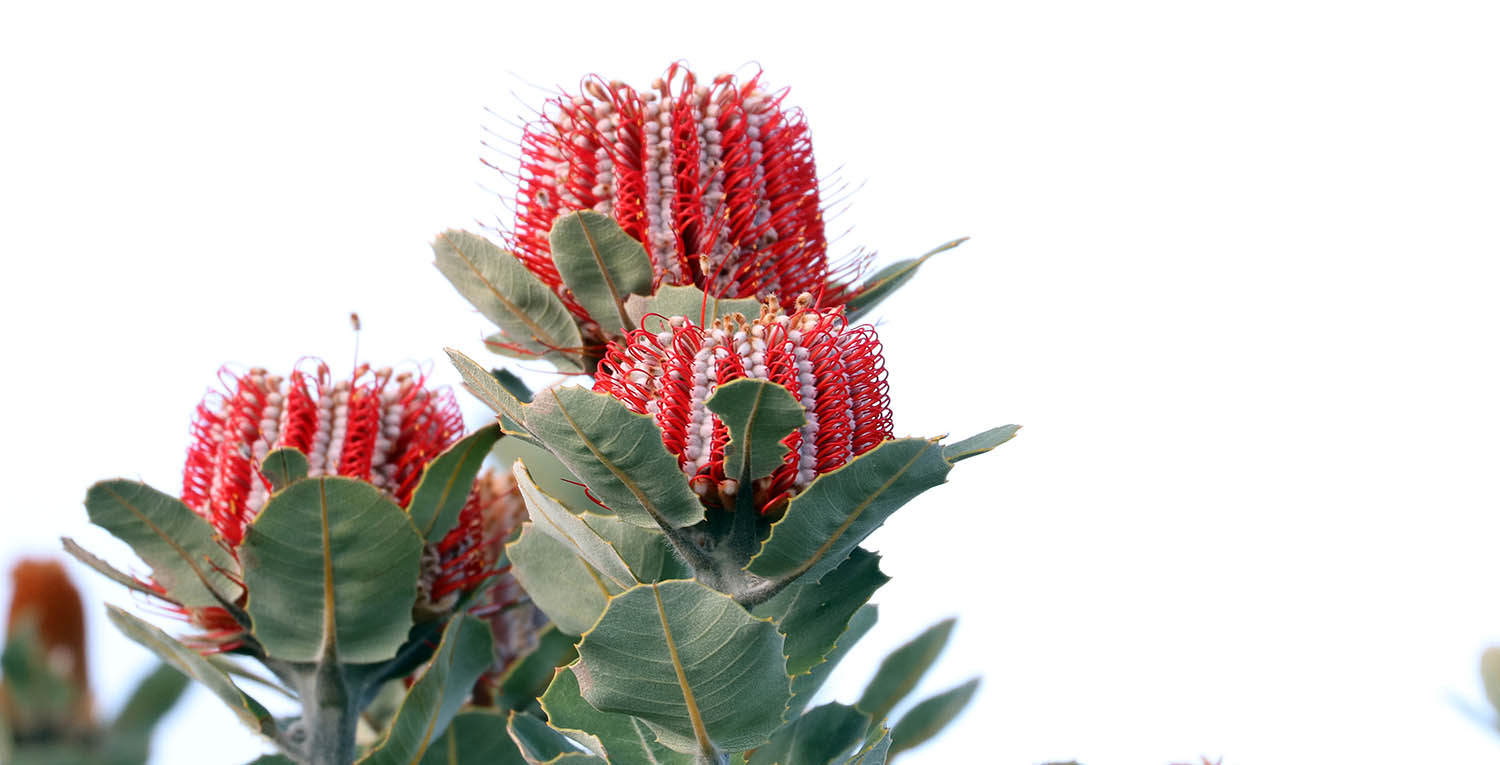 Banksia coccinea, 'Scarlet Banksia' (Cheynes Beach).
Banksia coccinea, 'Scarlet Banksia' (Cheynes Beach).The genus Lambetia contains 10 species, and all but one species are endemic to the south-west of Australia. The colourful flowers are dominated by a large floral tube with distinctive tightly curled peeling back lobes.
 Lambertia multiflora, 'Many-flowered Honeysuckle', (Lesueur NP, W.A)
Lambertia multiflora, 'Many-flowered Honeysuckle', (Lesueur NP, W.A)The family Fabaceae includes all the 'pea' flowers. The genus Hovea has about 40 species, all of which are endemic to Australia. They are usually shrubs and have purple or blue flowers with a white centre.
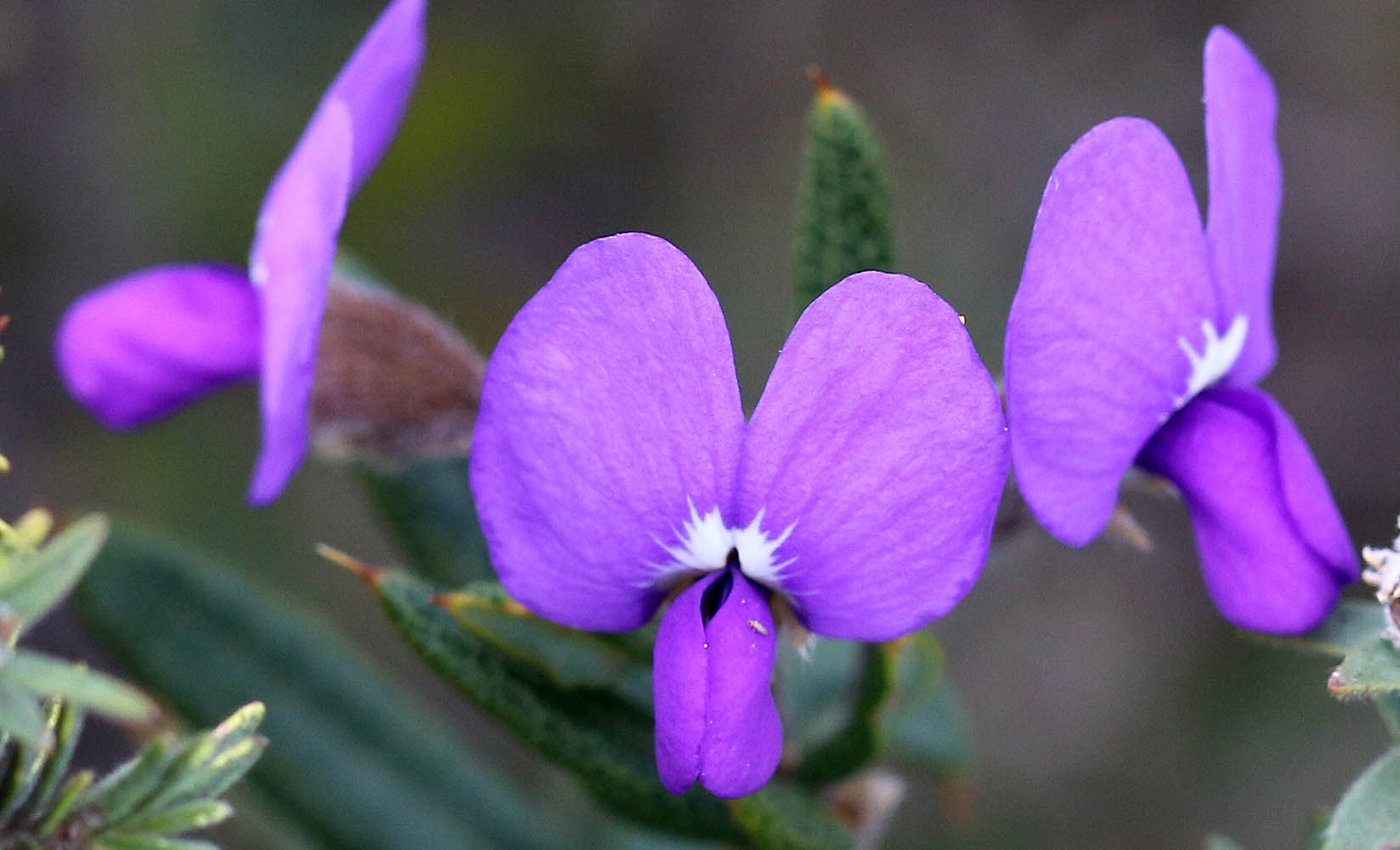 Hovea, (Lesueur National Park, W.A.)
Hovea, (Lesueur National Park, W.A.)Ecologically the most dominant and important family in Australia is the Myrtaceae, and they are certainly a large part of the heathlands. Eucalyptus is not quite the biggest genus of plants in Australia (that record belongs to Acacia), but arguably the most important. There are some beautiful Eucalypts in the south-west region of Australia, and they are of course the dominant tree that makes up the ecosystem and name of 'Mallee'.
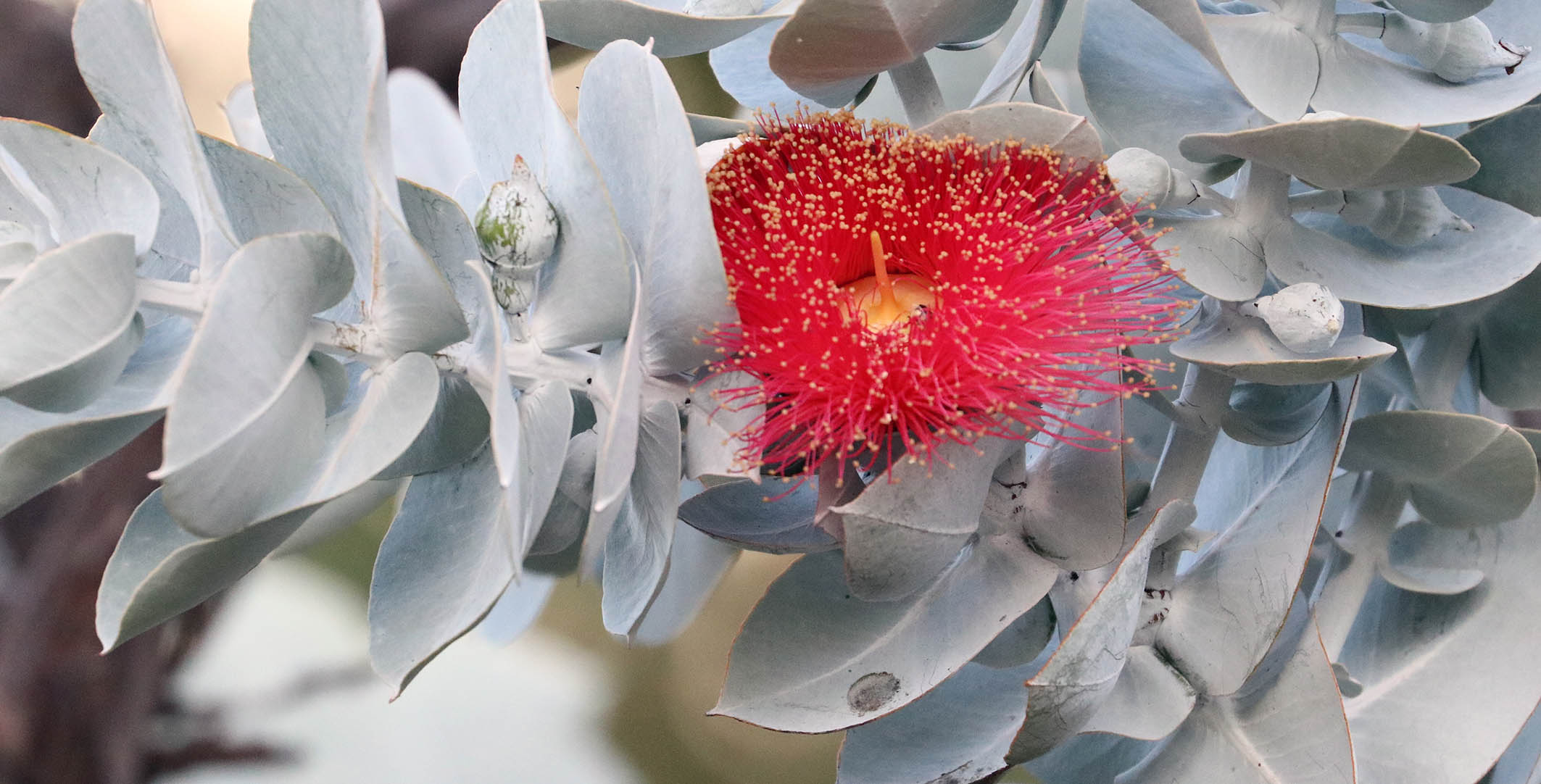 Eucalyptus macrocarpa, 'Mottlecah', (Kings Park, Australia)
Eucalyptus macrocarpa, 'Mottlecah', (Kings Park, Australia)Some species of Beaufortia are called 'Bottlebrush' and they are related and look similar to the genus Callistemon. There are some 22 species in this genus. They are all endemic to the south west of Australia.
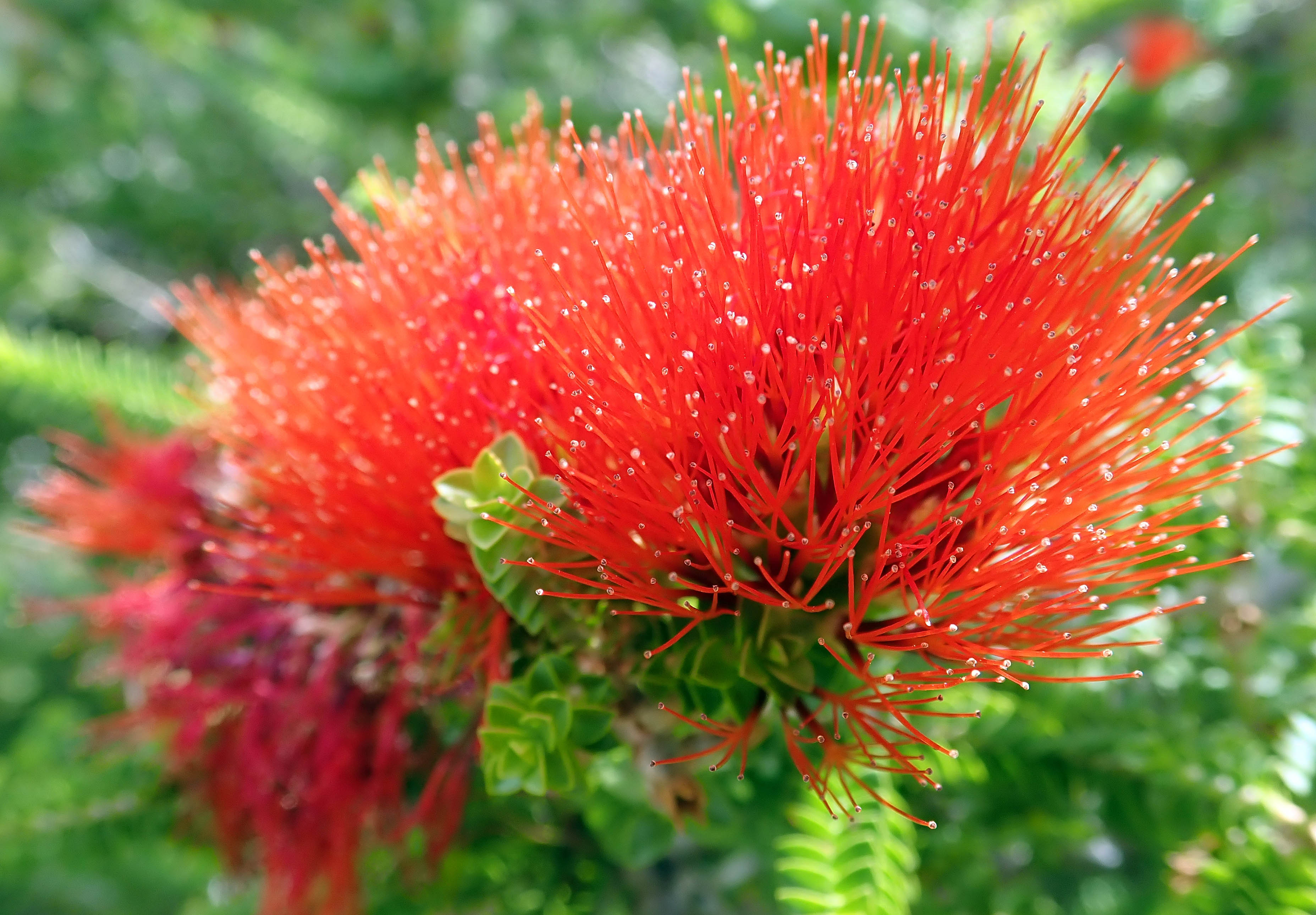 Beaufortia (Kings Park, Australia).
Beaufortia (Kings Park, Australia).Most of the 100 species Verticordia spp. 'Featherflowers' are found in the sandy soils of the heathlands of south-west Australia.
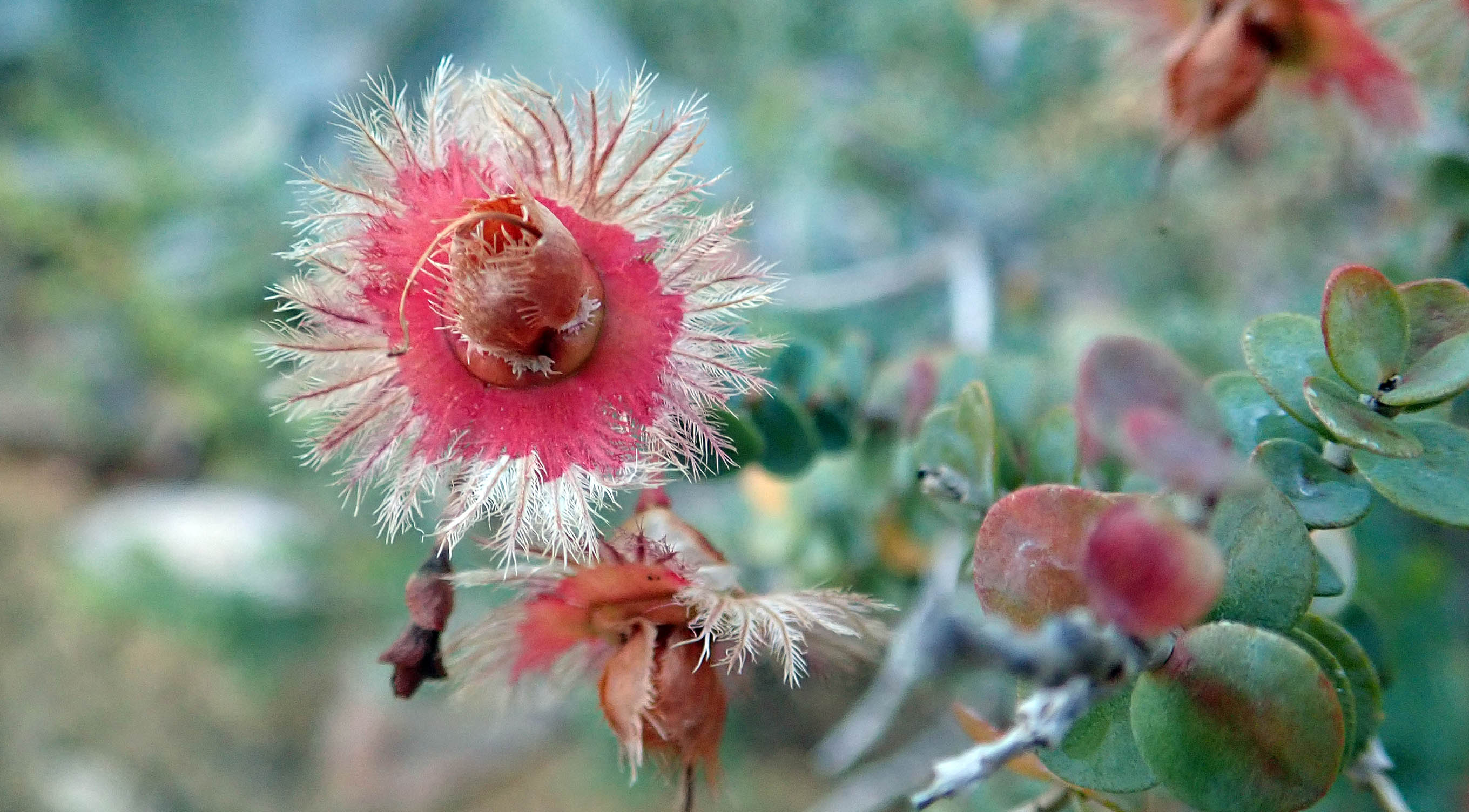 Verticordia ethteliana, (Kings Park, Australia).
Verticordia ethteliana, (Kings Park, Australia).The family Goodeniaceae includes over 400 species, and are mostly found across the more arid parts of Australia. This 70 species in the genus Dampiera are all endemic to Australia. They grow as small herbs, the leaves are sometimes have a toothed edge. The flowers usually have five blue or purple (but sometimes pink or white) petals. Those petals often have wavy margins and end in a double lobe. They are often yellow where the stamens are connected deeper inside the floral tube. While they are found in drier habitats across the continent, more species are found in Western Australia. The genus is named for William Dampier, the infamous buccaneer.
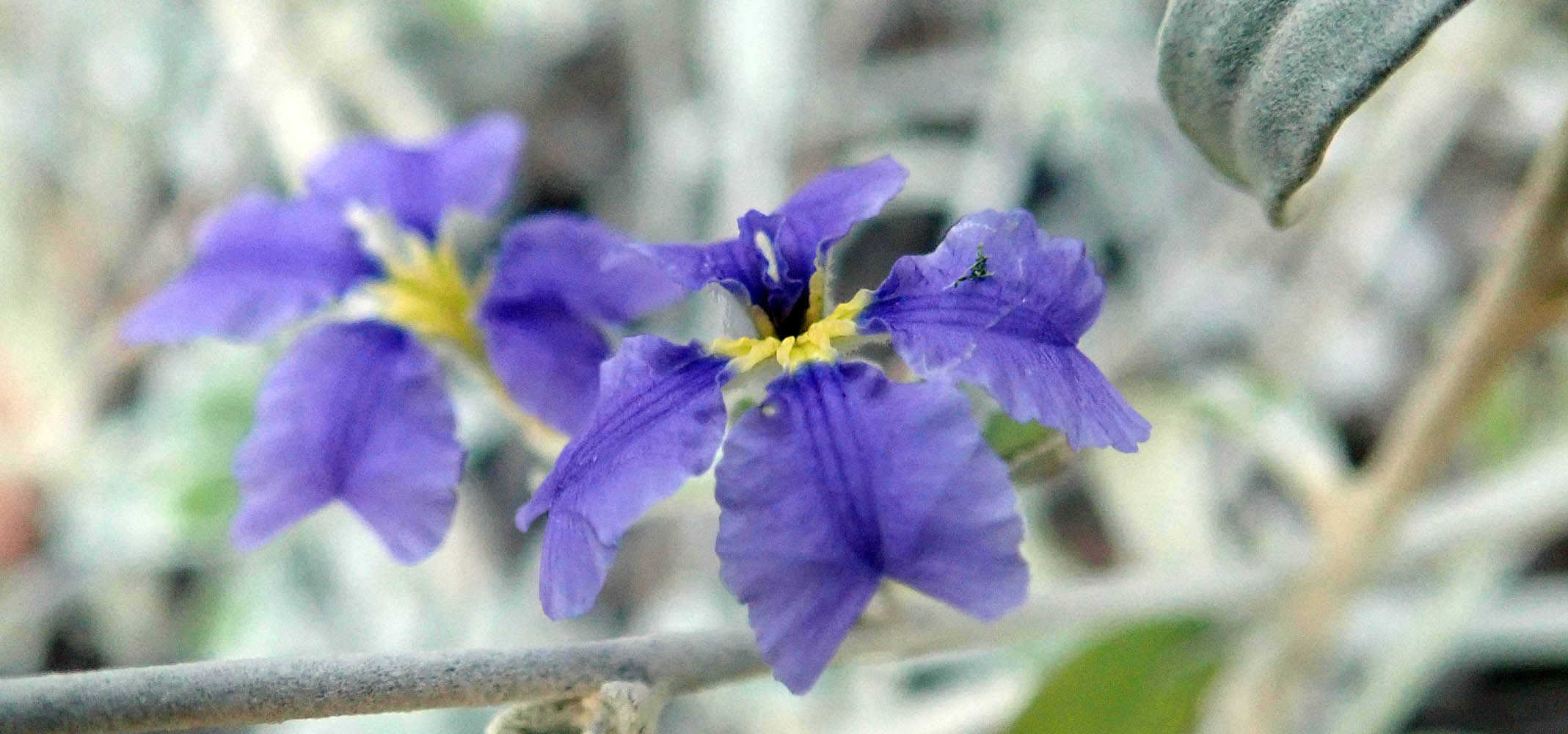 Dampiera altissima, 'Tall Dampiera', (Shark Bay, W.A.)
Dampiera altissima, 'Tall Dampiera', (Shark Bay, W.A.)With such a large array of spectacular flowers, there has to be a lot of pollinators. Many of these are insects, such as beetles.
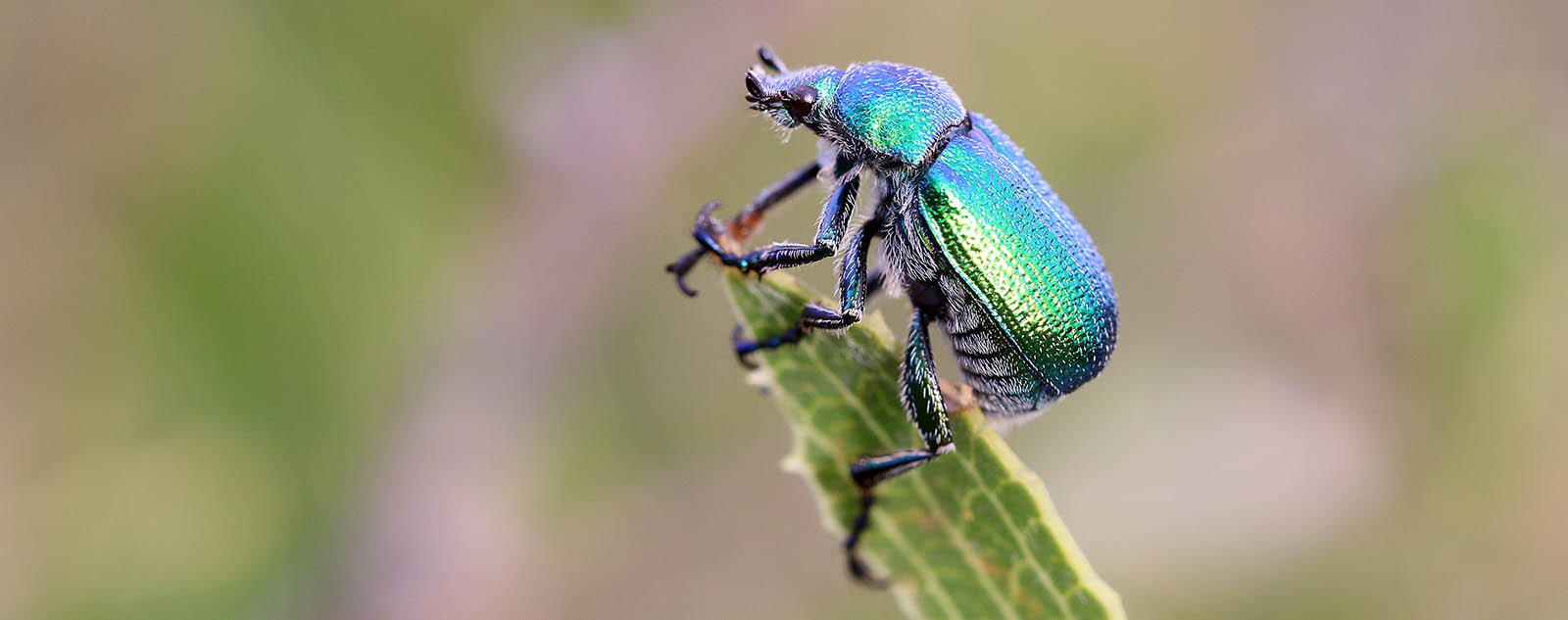 'Green Scarab Beetle', (Lesueur National Park, Western Australia)
'Green Scarab Beetle', (Lesueur National Park, Western Australia)The most common reptile seen in the south-west heathlands is the Shingleback Lizard. They are often seen basking on tracks at warmer times of the year.
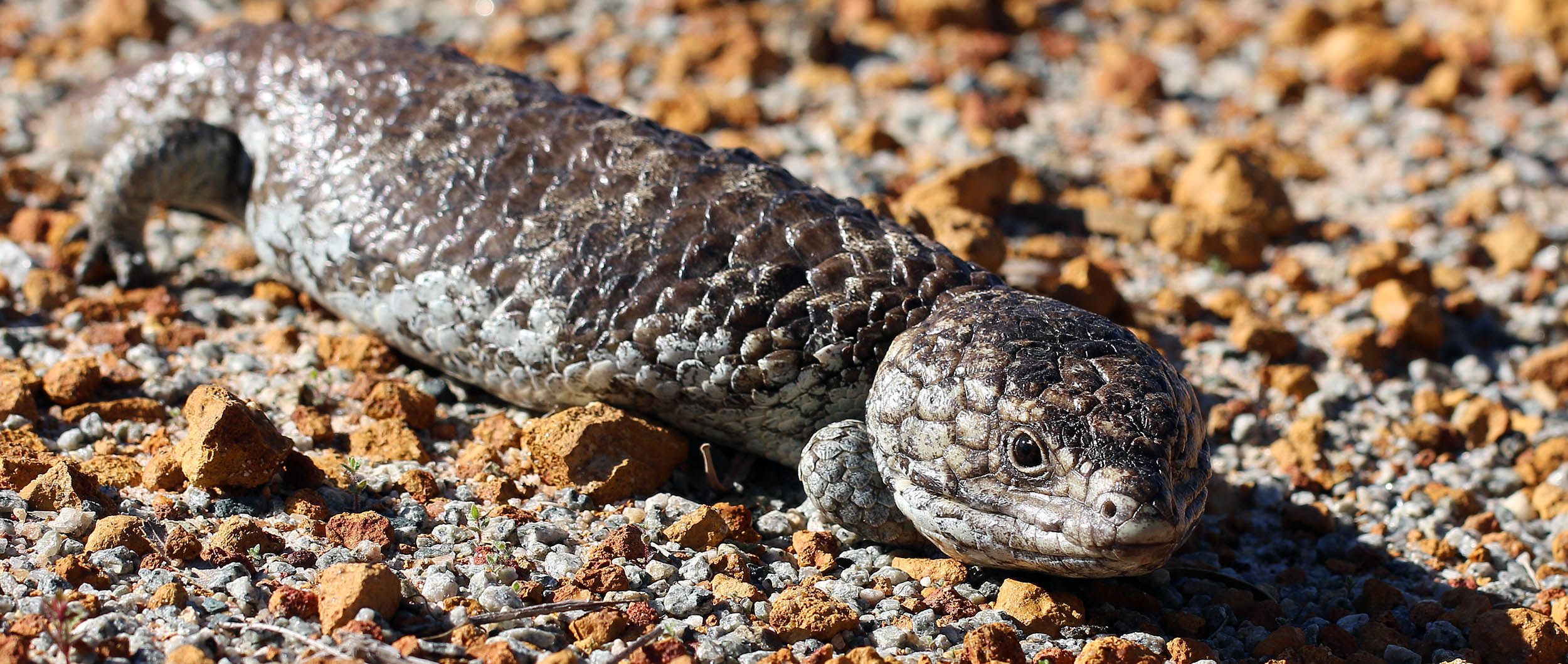 'Bobtail', 'Pinecone Lizard', (Lesueur National Park, W.A)
'Bobtail', 'Pinecone Lizard', (Lesueur National Park, W.A)With the high diversity of showy flowers, it would be expected that this habitat would have to entice at least a few species of Australia's largest family of birds, the honeyeaters....
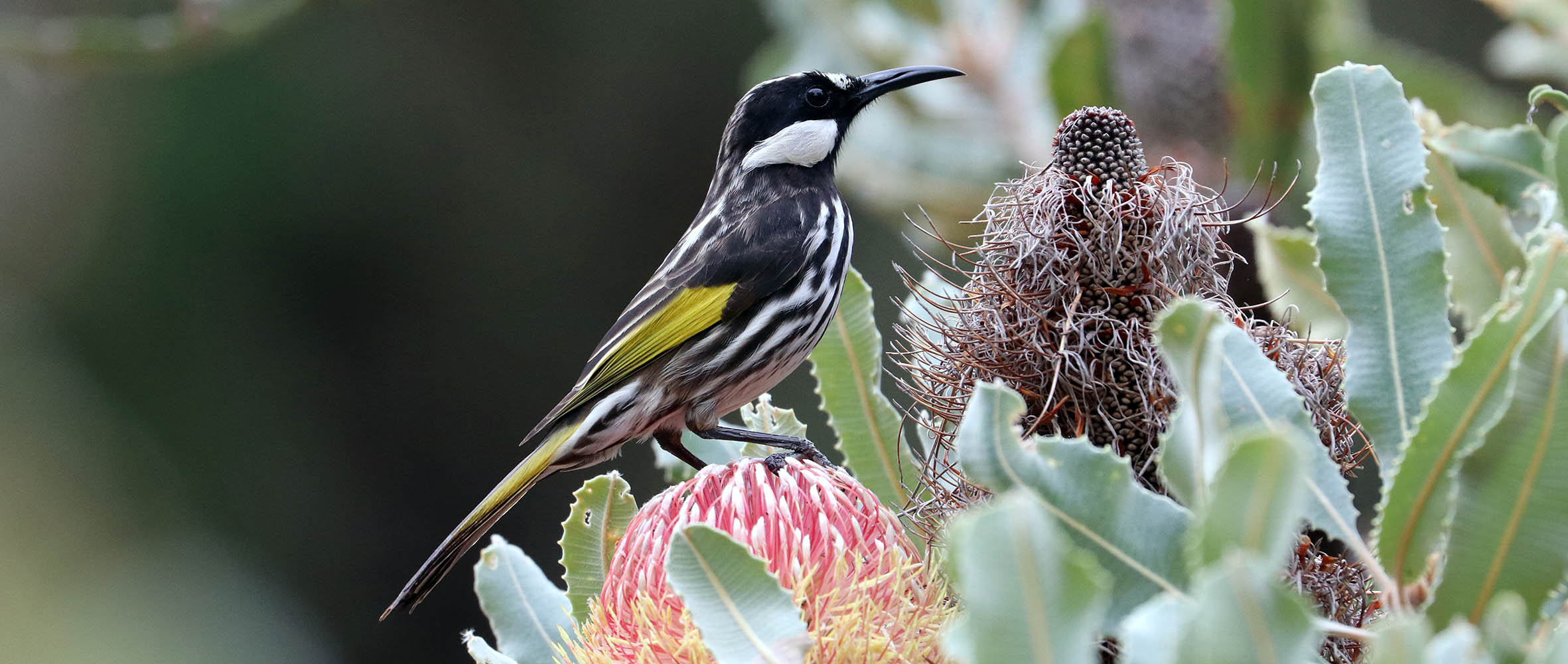 'White-cheeked Honeyeater', (Kings Park, W.A)
'White-cheeked Honeyeater', (Kings Park, W.A)Mammals include various macropods such as the most common species in the south west, the Western Grey Kangaroo.
 Western Grey Kangaroo (Lesueur National Park)
Western Grey Kangaroo (Lesueur National Park)Places to experience the Australian heathlands
There are many amazing national parks to experience the heathlands in the south west of Australia. The best time to visit is (southern hemisphere) spring when it is warmer, rains less, and many of the flowers are out. However, there are different species in flower at different times of the year, and winter and autumn are less crowded times.
There are two large main areas of heathland. The northern area starts a few hours drive north of Perth and stretches along the coast to Kalbarri National Park, and inland to Lesueur National Park. The southern area is about six hours drive southeast from Perth, and is mostly found along the southern coast of south-west Australia. It includes Fitzgerald River National Park and inland to Stirling Range National Park.
Lesueur National Park is a relatively small but great national park for flowers. It is located just inland of Jurien Bay. There are some 900 species of plants here, and there is always something in flower. It has one main one-way sealed road, with various places to pull over for interp signs, and parking areas for two walks. The botany is fantastic, with many places to pull over and look at the flowers. Because it is small and off the main coast highway, it is usually fairly quiet. There toilets located at the car-parks of both main walks. I started both hill hikes, but did not finish either, as I got too distracted by the nature. There is no accommodation or camping here, but there are some free camps located less than an hour away.
Fitzgerald River National Park is one of my favourite national parks in the south-west. It is very large, at over 300,000 hectares; those numbers don't mean much to me in terms of appreciating the size of the park, but if driving along the highway that runs parallel with the park, it takes a hour or so to go from one end to the other. It has two quite seperate regions to access; one at the western end, and one at the eastern end. The main area at the eastern end has a camping ground (with hot showers!) and has mobile phone range. (The settlement of Hopetoun is just 20 minutes drive away, and has accommodation, cafes, fuel and shops). The sealed road continues from the camping ground and stops at various beaches and walks. The botany here is fantastic. There are over reportedly over 60 plants species that are only found in this national park, and another 50 or so that are rare outside of it.
